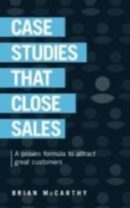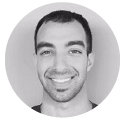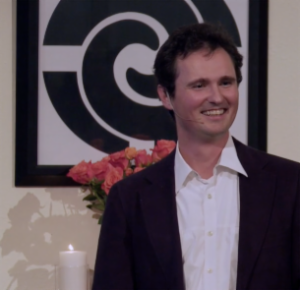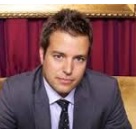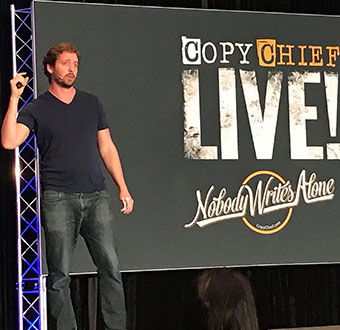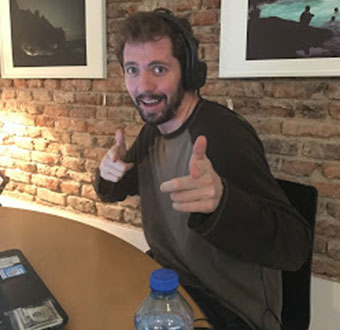I discovered Kute Blackson a few years ago while listening to The New Man podcast. I dug what he said and have followed him loosely since.
Kute helps people find their purpose, their true selves, and live with more love. He does one-on-one coaching and leads small-group workshops in Bali.
I wanted to breakdown his coaching case studies but couldn’t find any. I did, however, find this lovely testimonial page of people talking about how his Bali excursion. Here’s a quick breakdown of that page, including what’s great about it and a few ways to make it better so it helps to increase sales.
First off, it’s fantastic how many testimonial videos he has. Kute has 21 people singing his praises and talking about how great his Bali excursion is. And the camera quality is very high on a few. Having this many high-quality testimonials shows people he’s the real deal.
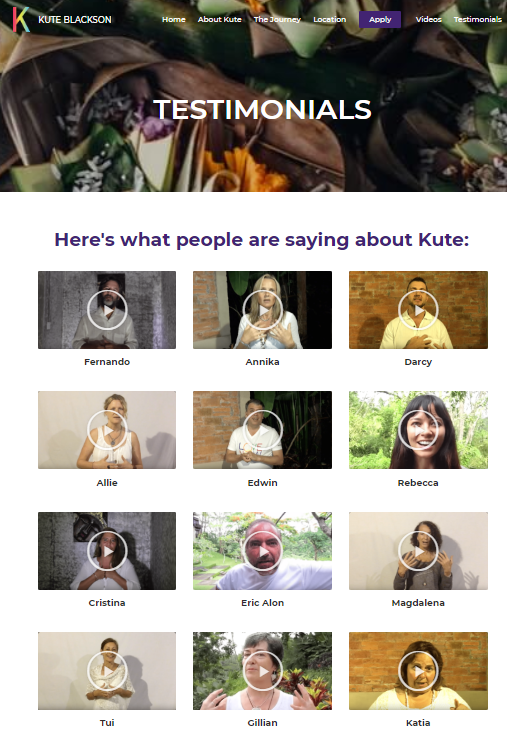
As you watch the videos, a lot of the key promises Kute makes are backed up. People talk about finding themselves, connecting with love, etc.
What’s missing, however, is the answer to a key question the visitor has. That question is: “Is this right for me?”
People are at different parts in their personal development journey. For example, I’ve done a ton of workshops and therapy and stuff. I don’t feel I need to find my purpose and true self because I’ve got that covered. So for someone like me, it would be awesome to see a story of someone who felt the same way and then see what he got out of the excursion.
And I’m just one example. There are tons of different people with different backgrounds, fears, desires, and doubts. It would be great to have as many of those stories as possible. That way, no matter who lands on this page, they can find someone just like them talking about how transformative this program was. All these different types of people will then realize “Hey, this program is exactly what I need…” and be more likely to buy.
It would also be great if they made it easy for people to find someone who is just like them. As the page currently is, all you see is the video and the person’s name below it. It would be better if they included quotes or a quick blurb explaining this person’s transformation. That way, people could quickly find someone like them.
For example, here’s a testimonial page I created for a client. It shows different quotes and has blurbs designed to connect with different types of buyers. This testimonial, for example, targets entreprenuers who want to increase revenue but also freee up their time.

Okay, now let’s dive into one of the testimonial videos themselves.
Here’s the video from a woman named Rebecca:
This testimonial video does some great things. It answers important questions the reader cares about.
For example, they start with Rebecca sharing how she found out about this program and what drew her to it. Rebecca talks about how she heard Kute on a radio show and was intrigued. She liked the idea of going to a new place to stretch and learn about herself.
This story connects with the viewer because they are likely in a similar situation. They heard about Kute in a similar manner and have that same intrigue.
A great thing to add here would be the struggle and pain Rebecca felt before the trip. What was the specific problem she was hoping to solve? What was that problem costing her?
Diving deeper into the pain and problem she faced can connect with similar pain and struggles the viewer has. Making them aware of their pain adds more urgency for them to buy because they’ll want to get rid of it.
Rebecca then mentions what a loving experience it was to apply for the program. By sharing this, the viewer starts to get a taste of what it would be like to work with Kute. And the way Rebecca talks about it makes it sounds great.
It’s super important — especially for personal development programs — to talk about what it’s actually like to go through the program. The more people can picture and feel what it’s like, the more they will want to go through it. (It also helps them see more clearly the thing that they are buying. It’s hard to buy a workshop when you don’t know what’s going to happen. People are less likely to buy when they are confused about what they are getting.)
I would go into a ton of detail here. Really show how incredible this experience is. And share some wisdom that is valuable to the reader. That will help them see there is real insight and transformation available here.
I would have Rebecca answer questions like:
-What the other people on the trip where like?
-What were some highlight moments? Why were they so impactful?
-What were the specific things you learned?
-Were there any scary or challenging parts? How’d you overcome them?
I’d also include a bunch of pictures showing what the event was like for her.
Again, more detail creates positive images and feelings within the reader. They get a small taste of what’s available. And if that taste is good, they’ll want more.
Next, Rebecca talks about the benefits of the program. She talks about how she “learned so much about myself I can’t even tell you.” And that she’s excited to spread what she knows about herself.
This is a great quote. But it’s also a huge missed opportunity. I’d go way deeper into detail of what Rebecca discovered and why it mattered to her.
There could be an absolute goldmine. What she learned may have completely transformed her relationships, love life, career, personal happiness, etc. There could be compelling, gut-wrenching stories that fill people with love and hope and get them to sign up. Instead, we gloss over the impact of this trip with a vague statement about how she changed.
Rebecca’s journey with the Bali excursion would also be even more powerful if they followed up with her a couple of months later. That way, Rebecca could report back the change this program made in her life. She could have real stories of how her relationships, her confidence, and whatever else are all better as a result.
Finally, Rebecca talks about Kute. This is super important because people are skeptical. They don’t know if Kute is really like he is in his videos or if that’s just a show.
Rebecca goes on how Kute is bursting with love and compassion. So people can see he’s genuine and great to be around.
This helps people trust Kute even more. And it helps them see what it will be like for them to spend time with them.
Okay, that was a lot. Here’s a quick recap of everything.
What makes the case studies great:
- Over 21 people sharing testimonials helps people see Kute is the real deal.
- People share their results backs-up the promises Kute makes in his marketing materials. This builds trust and makes the program more desirable.
- Customers share how they found out about Kute and why they joined. This helps connect to the reader who likely in a similar situation.
- They share how great Kute is. This eases the viewer’s concern that they may not enjoy him/the experience.
And here are a few ways to make these even better
- Have the copy on the testimonial page pop. Make it easy for people to find someone like them.
- Share more detail of what the programs was like. Highlight key moments, lessons learned, etc.
- Go into more detail on how people’s lives have changed. Include specific examples. Make it tangible. Paint a picture of what is possible for the reader.
- Go deeper into the pain people felt before joining. What challenges did they face? What was this costing them? Why was it important to change? What was their goal? All this can connect with the reader and help them feel more urgency to join themselves.
How to get done-for-you case studies
There’s a lot more I could go into here. But that’s good for now.
If you want to create case studies like the ones Tony has — but also include all the points I mentioned — check out my book Case studies That Close sales. It’s free on my homepage: MarketingWithBrian.com
That book lays out my full process for creating awesome case studies. Here’s an example of what they look like.
If you prefer these case studies are done-for-you, shoot me an email at [email protected] to get on my waitlist.

